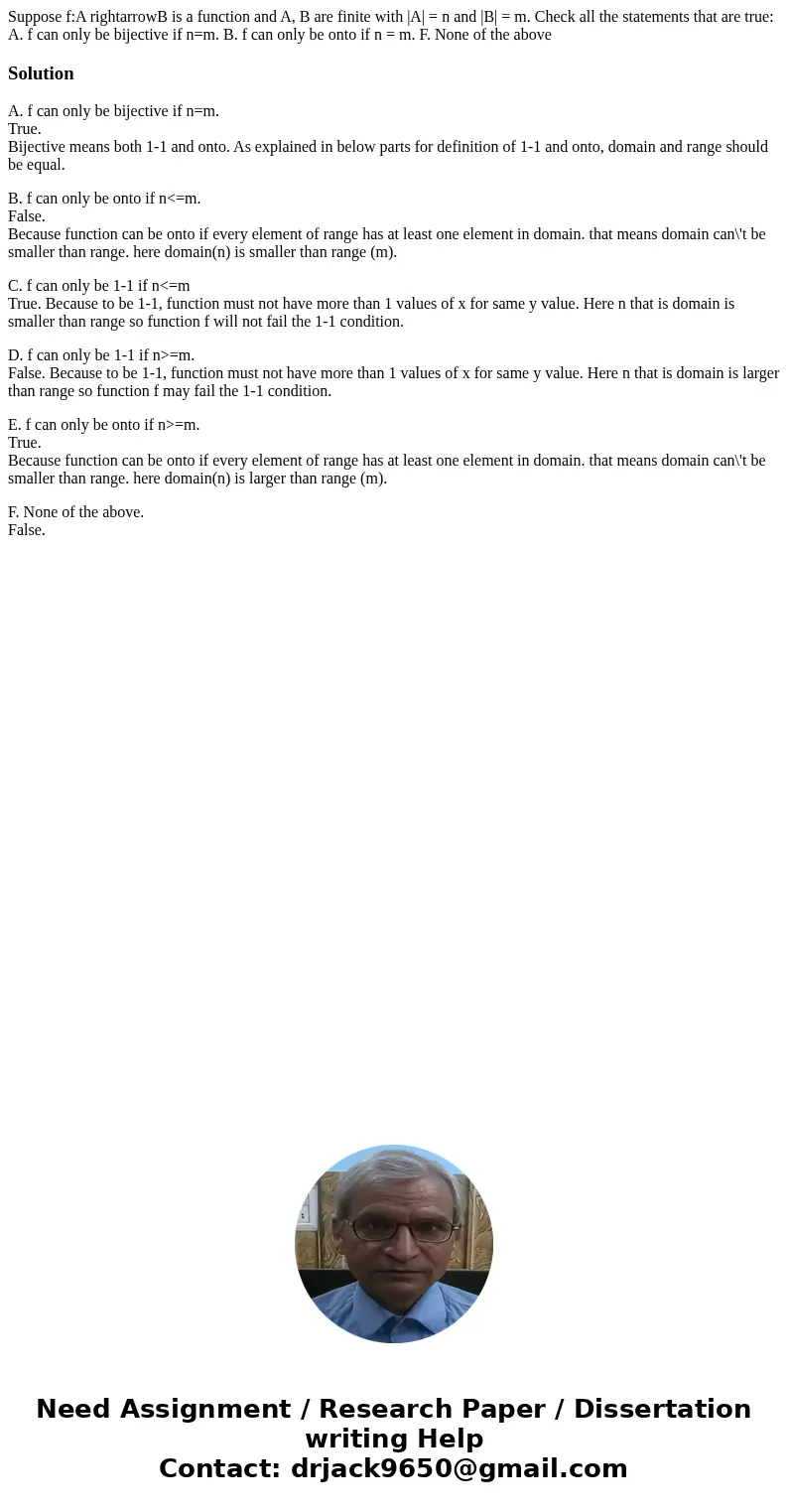Suppose fA rightarrowB is a function and A B are finite with
Solution
A. f can only be bijective if n=m.
True.
Bijective means both 1-1 and onto. As explained in below parts for definition of 1-1 and onto, domain and range should be equal.
B. f can only be onto if n<=m.
False.
Because function can be onto if every element of range has at least one element in domain. that means domain can\'t be smaller than range. here domain(n) is smaller than range (m).
C. f can only be 1-1 if n<=m
True. Because to be 1-1, function must not have more than 1 values of x for same y value. Here n that is domain is smaller than range so function f will not fail the 1-1 condition.
D. f can only be 1-1 if n>=m.
False. Because to be 1-1, function must not have more than 1 values of x for same y value. Here n that is domain is larger than range so function f may fail the 1-1 condition.
E. f can only be onto if n>=m.
True.
Because function can be onto if every element of range has at least one element in domain. that means domain can\'t be smaller than range. here domain(n) is larger than range (m).
F. None of the above.
False.

 Homework Sourse
Homework Sourse